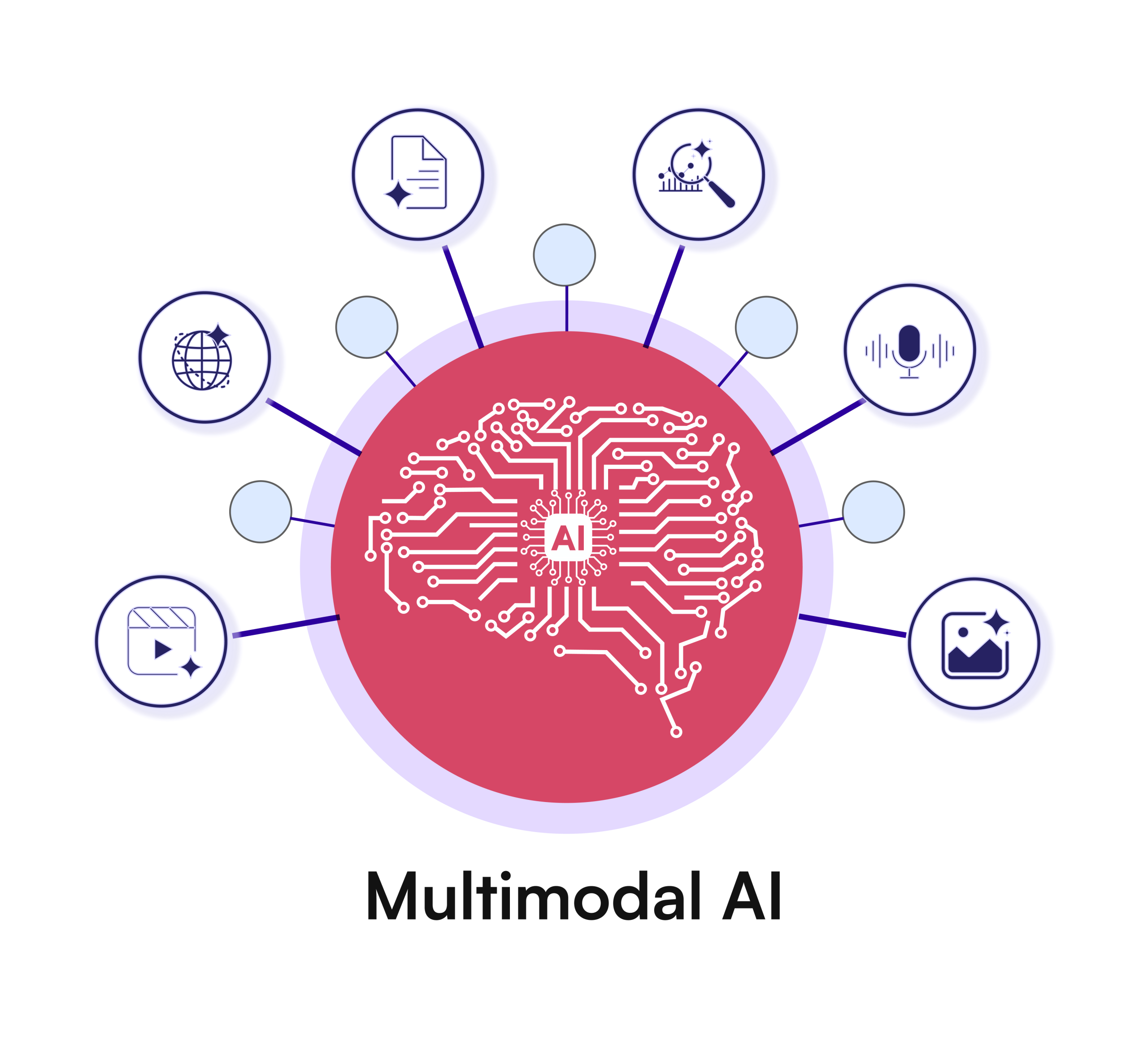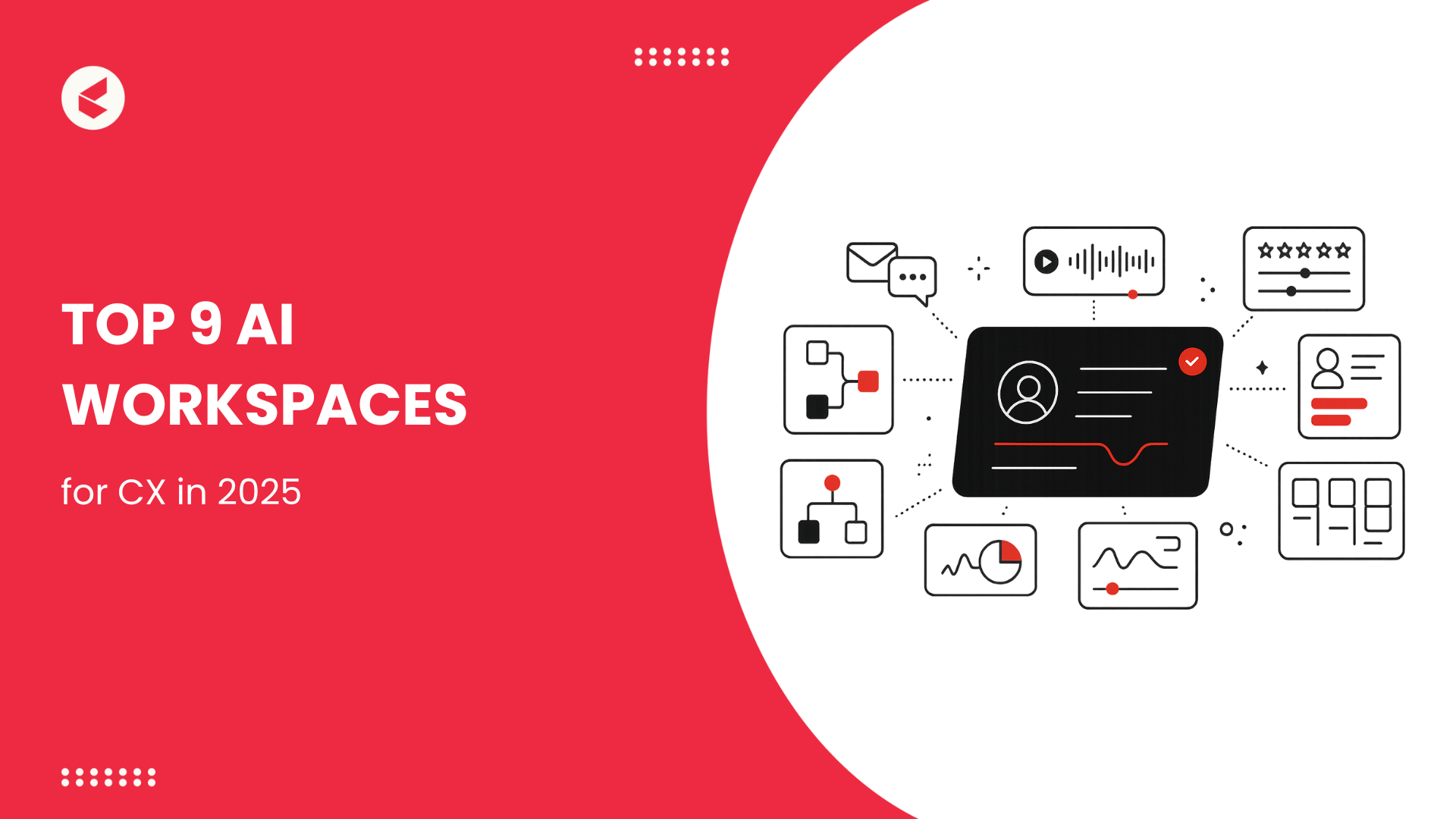Multimodal AI is moving from its experimental stage to now reshaping how brands build customer interactions.
As the Multimodal AI market heads toward $4.5 billion by 2028, according to Markets and Markets, platforms like GPT-4o, Gemini 1.5 Pro, and Claude 3 Opus are stepping into the spotlight. They’re working across images, audio, and documents with a level of fluidity that feels closer to human reasoning.
This shift is already driving real results with faster customer support, smarter recommendations, and interfaces that require less effort from the user.
In this post, we’ll break down what’s driving this adoption, how the top models compare, and what it means for teams building memorable customer experiences.
What is Multimodal AI?
Multimodal AI refers to systems that can interpret data and generate responses using more than one type of data, such as text, images, audio, video, or combinations of these. It’s not just about layering data types; it’s about understanding context across them.
In customer service, this means an AI can look at a screenshot of a checkout error, cross-check it with order data, and resolve the issue without the user typing a thing. It can read a blurry photo of a receipt, confirm the purchase, and trigger a return.
They can handle a forwarded email with a booking confirmation, extract the details, and update a reservation without any back-and-forth.
Benchmarking GPT-4o, Gemini 1.5, and Claude 3
The top players in multimodal AI, GPT-4o from OpenAI, Gemini 1.5 from Google, and Claude 3 Opus by Anthropic, each approach language, image, and audio processing with different design priorities.
While all three handle cross-modal tasks, their performance varies in ways that can change how your product interacts with users. Let’s take a brief look at it:
1. GPT-4o: Fast, Fluid Interactions Across Formats
GPT-4o (“o” for “omni”) is designed to handle text, image, and audio natively and in real time. That makes it well-suited for customer-facing use cases where latency matters, like voice-based support, instant visual explanations, or dynamic UI responses.
Why it’s useful for customer experience:
- Enables natural voice conversations with ~300ms response time, which is ideal for virtual agents.
- Can “see” screenshots, product images, or documents and give instant feedback or resolutions.
- Handles long interactions (128K tokens) without losing context, which is key for troubleshooting or ongoing conversations.
- Supports multiple languages with high efficiency, helping global support teams scale.
Gaps to consider:
- Audio support isn’t yet available via API, so speech workflows need workarounds.
- Performance drops with cluttered or handwritten images—worth noting for visual-heavy tickets.
- Transparency on training data is limited, which may raise compliance flags in regulated environments.
2. Gemini 1.5 Pro: Built for Scale and Media-rich Interactions
Gemini 1.5 focuses on handling high-volume, long-context tasks, making it a strong fit for companies with massive user interactions or content-heavy workflows. The “Flash” variant is tuned for real-time use in production apps.
Why it’s useful for customer experience:
- Supports large context windows (up to 1M tokens), making it great for analyzing entire chat logs, emails, or user histories in one go.
- Handles video, audio, and text, allowing it to review call recordings, transcribe them, and extract key customer insights.
- Context caching improves responsiveness and keeps interactions consistent over time.
Gaps to consider:
- Access is still limited; full capabilities aren’t yet widely available.
- Tends to prioritize smooth language over deep logic, which can lead to polite but incorrect responses under pressure.
- Visual processing isn’t as reliable when dealing with layered text or dense formatting.
3. Claude 3 Opus: Best for Accuracy and Structure-heavy Inputs
Claude 3 leans into precision, especially with documents, forms, and diagrams. It’s less about flair and more about delivering reliable, structured output, which is an advantage in industries where small errors create significant issues.
Why it’s useful for customer experience:
- Excellent for analyzing structured visuals: receipts, invoices, annotated forms, without needing perfect image quality.
- Performs well on long, multi-turn customer interactions, which are essential for complex support queries or escalations.
- Tends to give more measured, cautious answers—helpful in regulated sectors like healthcare or finance.
Gaps to consider:
- No video support, and its performance with real-world images (like photos of products) is limited.
- Slower in response, which can impact fast-paced support scenarios.
- Tends to err on the side of caution with unclear prompts.
CX Use Cases: Ecommerce & Travel
Multimodal AI isn’t just a backend upgrade; it changes what customer experience feels like. In ecommerce and travel, where visual inputs and context matter as much as language, these models quietly replace friction with functionality.
1. Ecommerce
From visual search to instant returns, AI is streamlining the post-click experience. Customers no longer need to describe what they want; showing a photo is enough.
For instance, the fashion brand SHEIN uses AI to power personalized product recommendations and trend forecasting, tailoring the shopping experience to individual users. Let’s look at some more use cases of AI in eCommerce:
- Product Discovery via Images: Users can upload a photo of an outfit or gadget, and the AI identifies similar products or matches inventory, even if there’s no text.
- Context-Aware Order Tracking: Instead of typing order numbers, users can drop in a screenshot of a tracking page, and the AI extracts status, estimates delivery, or flags issues.
- Smart Returns: A customer snaps a picture of a damaged item and gets an automated return label without needing to fill out forms or wait for approval.
2. Travel
AI helps travelers get answers on the move, whether it’s rebooking during a delay or decoding signage in a foreign language. Image and speech input remove barriers that text alone can’t solve.
For instance, Tripadvisor launched an AI-powered voice tour experience that lets users explore cities like Orlando and Abu Dhabi through guided, conversational prompts via Alexa and Google Assistant. Here’s more such use cases:
- Dynamic Booking Support: Upload a PDF itinerary or a flight confirmation email, and the system instantly surfaces key details, options, or upgrade offers.
- Change Management: Rebooking due to delays? The AI can interpret airport signage photos or a boarding pass to assist on the spot.
- Multilingual Help On the Go: Speech and image input lets travelers ask for help mid-journey, such as “What does this train sign mean?” and get real answers.
Key Differences and Considerations
Choosing the right multimodal AI model depends on how fast you need results, how large your workload is, and how sensitive your data might be. Here’s a breakdown of how the top models stack up across key decision factors:
| Feature | GPT-4o | Gemini 1.5 Pro | Claude 3 Opus |
| Speed | Fastest in real-time response (esp. voice + image) | Slightly slower, but Gemini Flash is optimized for speed | Slower; tuned for thoughtful, cautious output |
| Scalability | High throughput, generous API rate limits | Designed for scale, strong with caching and long context | Less optimized for high-frequency requests |
| Accuracy | Strong across most tasks, especially visual QA and charts | Great with summarization and search, sometimes over-smooth | Best in structured reasoning and document-level analysis |
| Data Privacy | Limited transparency on training data | Google’s data ecosystem raises integration concerns | Strong emphasis on alignment, safer for compliance-heavy use cases |
Selecting the Right Model for Your CX
The best model for your customer experience strategy depends on what you’re optimizing for. If real-time responsiveness is critical, GPT-4o delivers on speed. For long-context tasks or deep alignment with Google tools, Gemini 1.5 Pro is a better fit. Claude 3 Opus excels when accuracy, structure, and regulatory caution are top priorities.
Each model comes with trade-offs. It’s less about picking a “winner” and more about aligning the model with the reality of your customer touchpoints.
If you’re thinking about how to operationalize multimodal AI across your CX stack, Kapture CX can help integrate these capabilities directly into your support workflows, whether that’s visual ticketing, voice-led support, or automated document handling.
Book a personalized demo to learn more!













